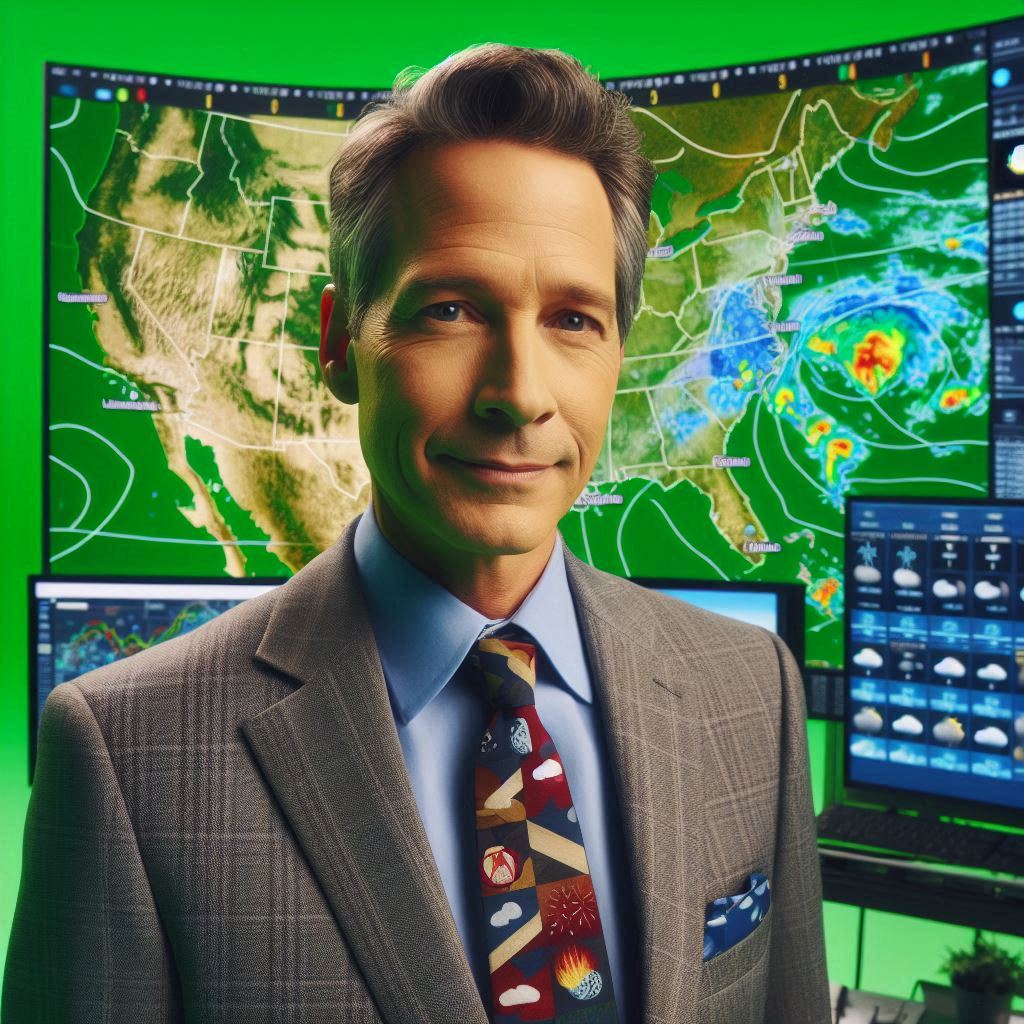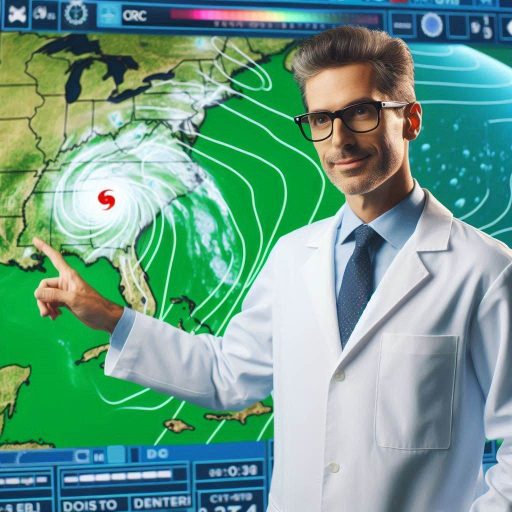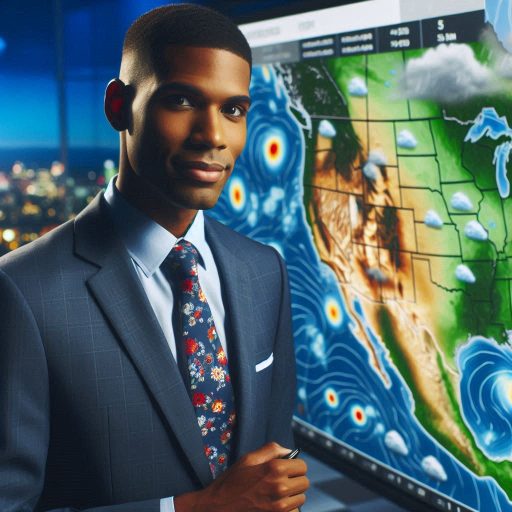Introduction
Weather forecasting is the science of predicting atmospheric conditions for specific locations over a defined period.
It involves gathering and analyzing a wide range of meteorological data to determine how the weather will behave in the near future.
Meteorologists utilize advanced technologies, such as satellite imagery, radar systems, and weather balloons, to collect data about temperature, humidity, wind speed, and atmospheric pressure.
This information is then processed using sophisticated models and algorithms to make predictions about various weather phenomena, including precipitation, storms, and temperature changes.
The importance of accurate weather forecasting cannot be overstated.
It plays a crucial role in our daily lives, impacting everything from what we wear to how we travel.
For individuals, reliable forecasts assist in planning daily activities, whether for commuting to work, organizing family outings, or scheduling outdoor events.
Knowing when to expect rain or sunshine can significantly enhance the quality of life, allowing people to enjoy their activities without unforeseen weather disruptions.
Businesses also depend heavily on precise weather forecasts.
For instance, the agricultural sector relies on accurate predictions to plan planting and harvesting schedules, manage irrigation, and protect crops from adverse weather conditions.
Construction companies use forecasts to optimize project timelines and ensure the safety of workers on-site.
In transportation, logistics companies rely on weather data to manage shipping routes, avoid delays, and ensure the safety of goods and passengers.
The Role of Data Collection
Data collection serves as the backbone of weather forecasting techniques.
Meteorologists rely on accurate data to predict weather patterns effectively.
Various sources contribute to this data, each playing a critical role.
Understanding these sources enhances our appreciation of forecasting.
Different Types of Data Gathered
One primary source of weather data is satellites.
Satellites orbit the Earth and provide valuable information about cloud cover and temperature.
They capture images of storm systems and monitor atmospheric changes.
This information helps meteorologists identify developing weather systems from a global perspective.
Satellites offer a comprehensive view that ground-based tools cannot provide.
Another vital tool is radar technology.
Doppler radar detects precipitation and tracks storm movement.
This technology helps meteorologists observe storms in real-time.
By analyzing radar data, forecasters can predict severe weather events like thunderstorms or tornadoes.
Radar also provides information about the intensity of precipitation, which is essential for accurate forecasts.
Weather stations also play a crucial role in data collection.
These stations measure temperature, humidity, wind speed, and atmospheric pressure.
They are strategically placed across various locations to ensure comprehensive coverage.
The data from these stations contributes to local and regional forecasts.
By gathering information from multiple stations, meteorologists can identify trends and anomalies in weather patterns.
In addition to these technologies, weather balloons are essential for collecting upper-atmosphere data.
Weather balloons carry instruments that measure temperature, humidity, and pressure at different altitudes.
This data helps meteorologists understand atmospheric conditions and how they influence surface weather.
Importance of Gathering Timely and Accurate Data
Timely and accurate data collection is crucial for effective forecasting.
Delays in data can lead to outdated or incorrect forecasts.
Meteorologists require up-to-the-minute information to provide accurate predictions.
This urgency is particularly important during severe weather events, where timely alerts can save lives.
The integration of various data sources enhances the accuracy of weather forecasts.
Modern forecasting models rely on computer algorithms that analyze this data.
These models simulate atmospheric conditions and predict future weather patterns.
By utilizing a combination of satellite, radar, and station data, meteorologists can refine their forecasts.
Data collection is vital in the science of weather forecasting.
The combination of satellite, radar, and weather station data creates a comprehensive picture of the atmosphere.
This synergy allows meteorologists to make informed predictions and provide timely warnings.
As technology advances, data collection methods will continue to evolve, enhancing our understanding of weather systems.
Accurate forecasting ultimately benefits society, improving safety and preparedness for weather events.
The Use of Computer Models
Weather forecasting has dramatically improved over the past few decades.
One of the key tools in this progress is computer modeling.
These models simulate the atmosphere and analyze vast amounts of data.
They allow meteorologists to predict weather patterns with greater accuracy.
How Computer Models Analyze Data to Predict Weather Patterns
Computer models process data from various sources, including satellites, weather stations, and buoys.
They analyze temperature, humidity, pressure, and wind speed to create simulations.
These simulations reflect current weather conditions and help forecast future patterns.
The models use mathematical equations based on physical laws governing the atmosphere.
By inputting real-time data, meteorologists can visualize possible outcomes.
This process helps identify trends and changes in weather systems.
The output of computer models is crucial for creating accurate forecasts.
Meteorologists rely on model predictions to inform the public about upcoming weather events.
Advancements in Technology for More Accurate Modeling
Advancements in technology have significantly enhanced weather forecasting.
Improved computing power allows models to process data more quickly and accurately.
High-resolution models can now simulate smaller regions with greater detail.
This capability helps meteorologists predict localized weather phenomena, such as thunderstorms.
Moreover, satellite technology provides continuous data updates, enhancing model accuracy.
Real-time data assimilation improves the initial conditions of weather models.
By incorporating new observations, models produce more reliable forecasts.
Machine learning and artificial intelligence are also becoming integral to forecasting.
These technologies analyze historical data to identify patterns and improve model predictions.
New software tools allow meteorologists to visualize complex data easily.
This user-friendly approach helps forecasters understand model outputs better.
As a result, they can communicate forecasts more effectively to the public.
In addition, collaborations between meteorological organizations enhance data sharing.
This practice fosters the development of global models that provide broader insights.
Computer models play a critical role in modern weather forecasting.
They analyze data to predict weather patterns and have evolved with technological advancements.
These developments have made forecasts more accurate and reliable.
The combination of improved data sources, computational power, and innovative algorithms is transforming the field.
As technology continues to advance, we can expect even greater accuracy in weather forecasting.
The science behind weather prediction will only get better, benefiting society as a whole.
Read: Educational Path: Becoming a Geologist in the USA
Meteorological Tools and Instruments
Meteorology relies heavily on various tools and instruments to gather data.
These instruments help meteorologists understand atmospheric conditions and make accurate weather predictions.
From traditional devices to modern technology, these tools play a vital role in forecasting.
Types of Instruments Used in Weather Forecasting
Meteorologists utilize several key instruments to measure different atmospheric parameters.
Barometers measure atmospheric pressure, providing crucial information about weather systems.
A falling barometer often indicates approaching storms, while rising pressure suggests fair weather.
Anemometers measure wind speed and direction.
This data helps meteorologists understand how weather systems move and evolve.
Thermometers measure air temperature, which influences weather patterns significantly.
Hygrometers gauge humidity levels in the atmosphere.
High humidity often leads to cloud formation and precipitation.
Rain gauges collect and measure rainfall, offering vital data for predicting floods and droughts.
Radiosondes, attached to weather balloons, measure temperature, humidity, and pressure at various altitudes.
This information is essential for understanding the vertical structure of the atmosphere.
How These Tools Help Meteorologists Make Predictions
These meteorological tools provide critical data that meteorologists analyze to make predictions.
By combining information from multiple instruments, meteorologists can develop a comprehensive view of the weather.
For instance, rising temperatures and decreasing pressure can signal an approaching storm.
Anemometer readings help track wind patterns, which can affect storm development and movement.
Data from these instruments feed into computer models, enhancing forecasting accuracy.
For example, barometric pressure readings can indicate whether a high-pressure system will dominate.
Anemometer data helps determine wind chill factors and potential hazards.
Moreover, the integration of radar and satellite technology has revolutionized weather forecasting.
Weather radars detect precipitation and storm intensity, providing real-time information.
Satellites capture images of cloud cover and track storm systems from space.
Together, these advanced tools improve the precision of forecasts.
Meteorological tools and instruments are essential for accurate weather forecasting.
They measure various atmospheric conditions and provide data critical for predictions.
Understanding how these instruments work helps meteorologists analyze weather patterns effectively.
As technology continues to advance, the accuracy of weather predictions will improve, benefiting society in numerous ways.
The collaboration between traditional instruments and modern technology ensures we stay informed about the ever-changing weather.
Read: Botany Career Fairs and Networking Events

The Impact of Climate Change on Weather Forecasting
Climate change significantly influences weather patterns worldwide.
As global temperatures rise, weather forecasting faces new challenges.
Meteorologists must adapt their techniques to account for these changes and improve prediction accuracy.
How Climate Change Affects Weather Patterns
Climate change leads to more frequent and severe weather events.
Rising temperatures cause increased evaporation, resulting in heavier rainfall and more intense storms.
This phenomenon creates challenges for meteorologists, who must predict changing precipitation patterns accurately.
Additionally, prolonged droughts and heatwaves have become more common.
These extremes strain water resources and disrupt ecosystems, necessitating improved forecasting to mitigate impacts.
The warming climate also affects atmospheric circulation patterns.
Shifts in jet streams can alter the typical weather patterns experienced in various regions.
For example, some areas may experience unseasonably warm temperatures while others face severe cold snaps.
Understanding these shifts requires advanced modeling techniques and continuous data monitoring.
Efforts to Improve Forecasting Techniques in a Changing Climate
In response to climate change, meteorologists are developing new forecasting techniques.
Improved computer models now incorporate climate data, allowing for better long-term predictions.
These models simulate various climate scenarios, helping meteorologists understand potential weather changes.
Furthermore, researchers focus on enhancing observational networks.
Expanding radar and satellite coverage provides more accurate data about evolving weather systems.
This information allows meteorologists to issue timely warnings for severe weather events, helping communities prepare.
Collaboration between climate scientists and meteorologists is crucial.
By working together, they can share insights and develop comprehensive models.
These models take climate change into account, enabling more accurate predictions of future weather patterns.
Education and public awareness also play essential roles in addressing climate impacts.
Informing communities about climate change helps them prepare for extreme weather events.
Meteorologists are increasingly using social media and mobile apps to disseminate critical information quickly.
Climate change profoundly impacts weather forecasting.
It alters weather patterns and presents new challenges for meteorologists.
Efforts to improve forecasting techniques in a changing climate focus on advanced modeling, enhanced observational networks, and collaboration.
By adapting to these changes, meteorologists can provide more accurate and timely forecasts, helping society navigate an uncertain climate future.
Read: Preparing for a Botany PhD: Tips and Advice
Explore Further: Neuroscience vs. Psychology: Key Differences
The Role of Meteorologists in Interpreting Data
Meteorologists play a critical role in interpreting weather data.
Their expertise allows them to analyze complex information and produce accurate weather forecasts.
By understanding atmospheric patterns and using advanced tools, they provide valuable insights that impact daily life.
Training and Expertise Required for Accurate Weather Predictions
Becoming a meteorologist requires extensive training and education.
Most meteorologists hold a degree in meteorology or atmospheric sciences.
This education provides a solid foundation in physics, mathematics, and environmental science.
Many meteorologists also pursue advanced degrees to deepen their expertise.
In addition to formal education, meteorologists gain hands-on experience through internships and fieldwork.
These opportunities help them understand real-world weather phenomena and data collection techniques.
Continuous education is vital in this rapidly evolving field.
Meteorologists must stay updated on new technologies, modeling techniques, and climate science advancements.
Meteorologists also develop strong analytical skills.
They learn to interpret data from various sources, including satellite imagery and radar readings.
This ability enables them to identify trends and patterns in atmospheric behavior.
By synthesizing information, they can make informed predictions about future weather conditions.
How Meteorologists Communicate Forecasts to the Public
Effective communication is essential for meteorologists.
They must convey complex information in a way that is easy for the public to understand.
Meteorologists often use various platforms to share forecasts, including television, radio, and social media.
Visual aids, such as maps and graphs, help illustrate key points and make forecasts more accessible.
Meteorologists prioritize clarity when issuing warnings for severe weather.
They provide timely updates on potential hazards, helping communities prepare for storms, floods, or heatwaves.
Accurate communication can save lives and reduce property damage during extreme weather events.
Furthermore, meteorologists engage with the public to raise awareness about climate change and weather patterns.
They explain the science behind weather phenomena, fostering a better understanding of the environment.
By connecting with communities, meteorologists build trust and encourage proactive measures against weather-related risks.
Meteorologists play a vital role in interpreting weather data and making accurate predictions.
Their training and expertise equip them to analyze complex information effectively.
By communicating forecasts clearly, they help the public stay informed and prepared for changing weather conditions.
As weather events become increasingly unpredictable, the role of meteorologists remains crucial in safeguarding communities and enhancing public awareness.
Transform Your Career Today
Unlock a personalized career strategy that drives real results. Get tailored advice and a roadmap designed just for you.
Start NowRead: Interdisciplinary Research: Botany and Other Sciences
Uncover the Details: Geology Internships: How to Find and Apply
Accuracy of Weather Forecasts
The accuracy of weather forecasts is essential for planning and decision-making in everyday life.
Accurate predictions help individuals prepare for various weather conditions, from sunny days to severe storms.
However, several factors can influence the accuracy of these forecasts, and ongoing efforts aim to enhance forecasting precision.
Factors That Can Affect the Accuracy of Predictions
Multiple factors impact the accuracy of weather forecasts.
One significant factor is the complexity of the atmosphere.
Weather systems are influenced by numerous variables, including temperature, humidity, wind speed, and pressure.
These variables interact in intricate ways, making predictions challenging.
Data quality is another critical factor.
Forecasts rely on accurate and timely data from weather stations, satellites, and radar.
Any discrepancies in this data can lead to errors in predictions.
Additionally, geographical features such as mountains and bodies of water can create localized weather phenomena, complicating forecasts further.
The time frame of the forecast also matters.
Short-term forecasts, typically up to 48 hours, tend to be more accurate than long-term predictions.
As the forecasting period extends, uncertainty increases due to the chaotic nature of the atmosphere.
Ways to Improve Forecasting Accuracy
Improving forecasting accuracy requires a multifaceted approach.
First, investing in advanced technology is crucial.
High-resolution models and sophisticated computer simulations can provide better insights into weather patterns.
Enhanced computing power allows meteorologists to process vast amounts of data more efficiently.
Expanding observational networks is also vital.
More weather stations, satellites, and radar systems can improve data quality and coverage.
Continuous monitoring of atmospheric conditions helps meteorologists stay updated on developing weather systems.
Collaboration among meteorologists and climate scientists is essential for refining forecasting techniques.
Sharing data and insights can lead to the development of more accurate models.
Additionally, incorporating machine learning and artificial intelligence can enhance predictions by identifying patterns in historical data.
Ongoing education and training for meteorologists are important for keeping pace with technological advancements.
This continuous learning helps them adapt to new tools and techniques for data analysis and interpretation.
Finally, effective communication of uncertainties in forecasts can improve public trust.
When meteorologists clearly explain the confidence levels associated with predictions, the public can make informed decisions.
The accuracy of weather forecasts is critical for public safety and planning.
Various factors, such as data quality and atmospheric complexity, can affect prediction accuracy.
By investing in technology, expanding observational networks, and fostering collaboration, the meteorological community can enhance forecasting accuracy.
These efforts will ultimately lead to more reliable weather predictions, benefiting society as a whole.
Conclusion
Accurate weather forecasting is crucial for daily life, impacting safety and decision-making.
From planning outdoor events to preparing for severe storms, reliable forecasts help individuals and businesses prepare for various weather conditions.
Meteorologists analyze data from satellites, weather stations, and radar to make predictions.
By doing so, they can save lives and minimize property damage during severe weather events like hurricanes, floods, or blizzards.
The future of weather forecasting holds exciting advancements that promise even greater accuracy.
Artificial intelligence and machine learning will enhance data analysis capabilities, allowing meteorologists to identify patterns in vast datasets quickly.
These innovations will lead to more precise and timely forecasts, benefiting sectors such as agriculture, transportation, and emergency management.
Additionally, global collaboration among meteorological organizations will improve data sharing, fostering innovation and consistency in forecasting models.
As climate change alters weather patterns, adaptive forecasting techniques will become increasingly vital.
Investing in research and technology will ensure more reliable forecasts and empower communities to make informed decisions.




